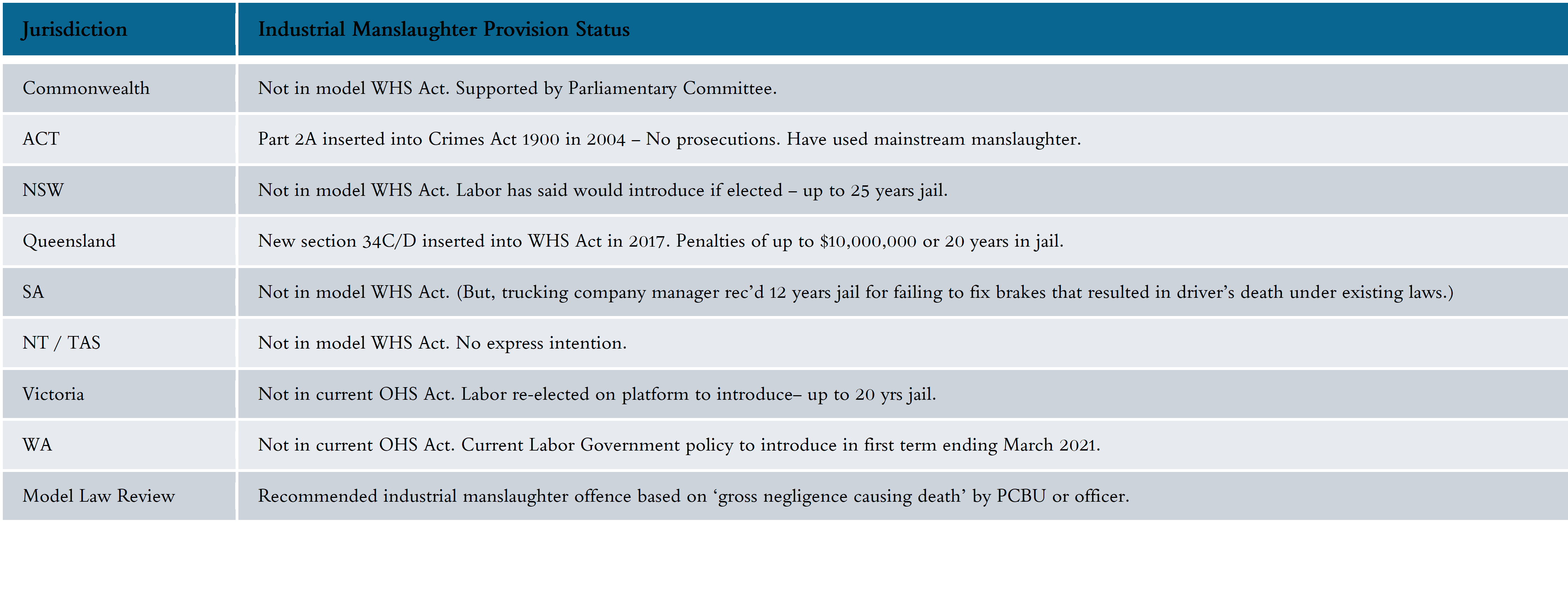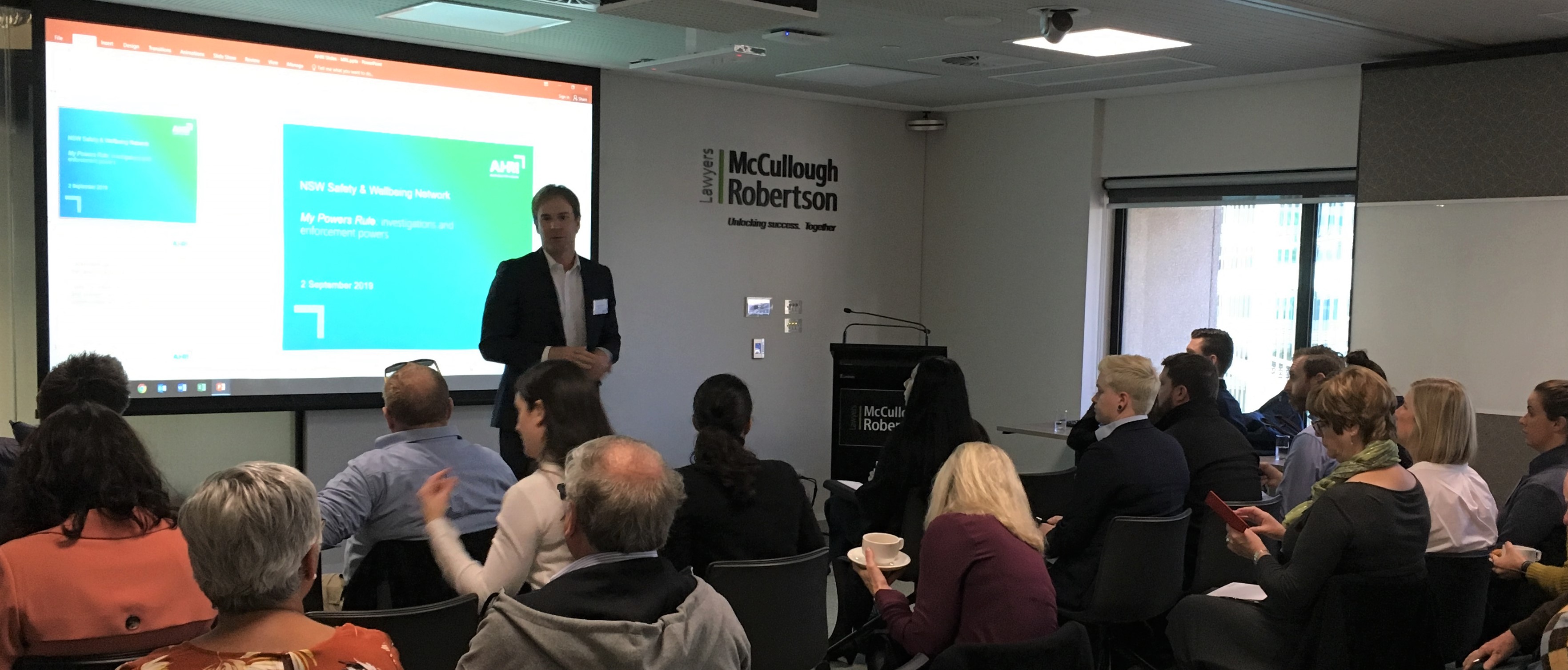AHRI Forum – Regulator Investigations & Enforcement Powers Wrap-up
Earlier this month our AHRI Safety and Wellbeing Forum welcomed Scarlet Reid and Nathan Roberts of McCullough Robertson Lawyers to share their views on the latest trends in regulator investigations and enforcement powers. McCullough Robertson’s session covered a practical overview of incident response, plus insights and tips for organisations to meet their legislative requirements and work with the regulator.
Recent trends
The recent Marie Boland review of the model WHS laws concluded that the laws are largely operating as intended, but the final report includes 34 recommendations to improve clarity and consistency, including undertaking further review and analysis in certain areas.
The number of criminal convictions in Australia for breaches of WHS laws has been historically been low. This has changed significantly in the past few years with a trend towards jail sentences and regulators driving compliance in a number of jurisdictions (particularly Victoria & Queensland).
Industrial manslaughter is an offence making its way into state laws across Australia. It was noted that, aside from Queensland, new industrial manslaughter laws will include fatalities other than workers. Once implemented this will potentially impact all customer-facing businesses in relevant jurisdictions.

McCullough Robertson suggested there is an increasing focus of the regulator outside of its traditional sectors (e.g. high-risk industries such as mining and construction). The Marie Boland review recommended the development of additional regulations on how to identify psychosocial risks in the workplace and the appropriate control measures to manage those risks. It is understood regulators are now interested in less tangible incidents such as occupational violence and psychosocial health/injuries (e.g. workplace bullying). Although traditional WHS hierarchy of controls that can be applied to eliminate or minimise risk to health and safety SFAIRP are well suited to controlling physical hazards, identifying and controlling potential psychological hazards can be more complex, which is many employers’ greatest concern.
McCullough Robertson incident response summary:
- Always prioritise first aid, emergency response and safety
- [In the case of notifiables] the incident scene must be preserved, unless disturbance is required to avoid further harm / risks. Notify the regulator immediately
- Inspectors have broad powers – including to require answers (must give ‘reasonable help’; limited rights to refuse e.g. self-incrimination)
- Seek legal advice early and try to avoid statements (including as part of internal investigations) being provided or documents being created before advice given
- Workers interviewed must be truthful, but should avoid speculation
- Investigation offences include inspector obstruction and/or giving false/misleading answers
Scott Paine, AHRI Network Convenor, has supported clients through numerous incidents in NSW, Victoria and Commonwealth jurisdictions. He shared his insights on incident response and regulator engagement:
- The immediate safety of the injured worker/s and their colleague/s is paramount
- The ultimate goal for safety laws and regulation is to eliminate or minimise harm to workers and the community, so consider the regulator a useful source of lessons learnt and other incident data to be constructively used within your organisation
- As the nature of work evolves, so does the WHS risk profile. Engaging an expert can help you both comply and obtain great health, safety and wellbeing outcomes
- Multi-jurisdictional issues may arise, such as notifiable incidents that occur whilst state-based organisations are working for a Federal Government agency. Incidents may require notification to both Comcare and the state regulator. Once the scene is safe and emergency services respond, remember to notify all required regulators
- When notifiable incidents occur, be prepared to engage with a professional investigator, under legal professional privilege if required, so that root causes can be identified, and future occurrences prevented
- Work Science has helped clients investigate incidents and implement corrective actions in the construction, electricity, FMCG, retail and government sectors. Independent, efficient, expert WHS support with incident investigations provides regulators with a neutral interface and comfort that the PCBU is taking the investigation and corrective actions seriously
If you would to discuss how to practically navigate both the best safety outcome and organisational outcome in this complex area send me an email at [email protected].

